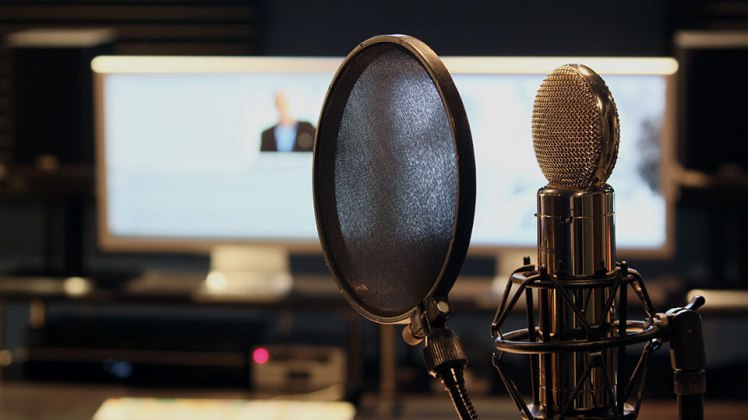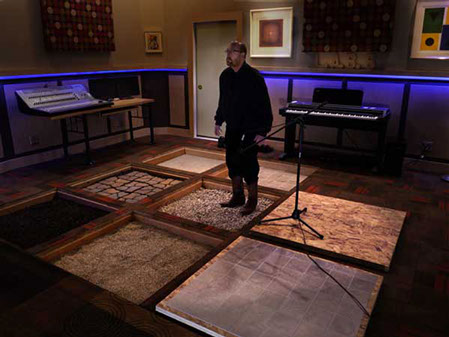A Post Production Blog

So as of right now I am currently in the final stretches of a home run that is the pre-production of the short film I’m working with, Apple. I happened to be feeling a little rusty on the ol’ Foley department and as I am a part of this I thought I’d do a little research into the matter. Here are the fundamentals.
Acoustics and the Room
Capturing a good sound is the best thing when recording Foley. Insuring that your recordings are of a high quality is imperative and the room that the Foley is recorded in can very well be the difference between a good sound and a bad sound. The desired Foley is a sound that has sonic depth, width and height and recording in a good room could very well make the difference between a good hi-fi recording and a low-fi recording. Recording in an average sized home is obviously going to be inferior to ready-made large room that is designed for acoustic recording. Sometime you aren’t going to have access to a professional live room or Foley studio, so you’ll have to make your own. By creating your own studio in a space, you know, you can squeeze all the dimensional sound out of the room by incorporating forms of sound diffusion and absorption. This is so any and all Foley that is created has little to no distortion added to the sonic depth, width and height. The ultimate goal is to eliminate all early forming reflections to the initial transient, so that there are zero echo’s and reverberations.

The Foley Objects
The whole point of Foley isn’t to simply recreate the sound of the object that is on screen, but intensify it, making it hyper-realistic as opposed to just realistic. This means that the sounds you create are supposed to be extra detailed, adding a more visceral experience to listen to. This can depend on genre but most of the time its all usable and interchangeable between films and genres. The first step before recording and Foley is to get together a Foley Asset List or a list of sound effects, so you know what you’re recording. The next step is to find out which objects can be recorded for the desired Foley for the film. Here are a few objects and techniques that seem to do the trick:
- Thin Sticks and dowel rods produce an adequate windy whooshing sound
- Old Chairs and stools are good for any kind of creaking
- Heavy-duty staple guns produce a good starting point for gun noises
- A rolled-up phone book produces a decent body punch sound
- Twisting and snapping celery is a good basis for bone snaps
- Corn starch inside a leather bag will produce a good snow crunch sound
- Walking over and scrunching old VCR Tapes is a good sound for walking over grass and leaves
- Flapping a pair of cleaning gloves will produce an adequate bird flapping sound
- Sprinkling rice and sand or cooking bacon on a pan will give you a good rain sound
Microphone Selection and Placement
The microphones you use when recording sounds is crucial. For whatever sound you are recording, there is a microphone that can record it. Good microphones for interior Foley include the Neumann KM185, Oktava mk-012, Audix SCX1/HC and most other hyper-cardioid condenser mics will capture good audio. For more detail you could even go with a ribbon mic. Proximity and placement of the microphone in relation to the sound source can greatly affect how Foley can be recorded. A close-up shot may require closer microphone placement to the sound, The more distance between the mic and sound source, the more room noise you’ll get. Experiment with different microphone positions and placement as well as preamp levels until you get a sound that you think best represents the visual object in the film.
For me, I am limited to recording a pretty decent amount of Foley in studio, but for all other sounds I’ll be getting the location sound gear out and getting some of them sounds that way. In an ideal world I would of course record everything I could in a studio-controlled environment, but I don’t have access to that kind of resource.
Wyatt Nicholls
Novice Audio Engineer
Student at SAE
References:
Hibbard, M. (18/03/2015). Recording Foley and Sound Effects: The Fundamentals. Accessed at https://www.premiumbeat.com/blog/recording-foley-and-sound-effects-the-fundamentals/
Video and Filmmaker. (01/05/2014). TIPS & TRICKS – SOUND EFFECTS. Accessed at http://videoandfilmmaker.com/wp/index.php/tutorials/tips-tricks-sound-effects/
[Image] http://hamilton-post.com/site/contact/
[Image] http://lab6studio.com/film-services.html